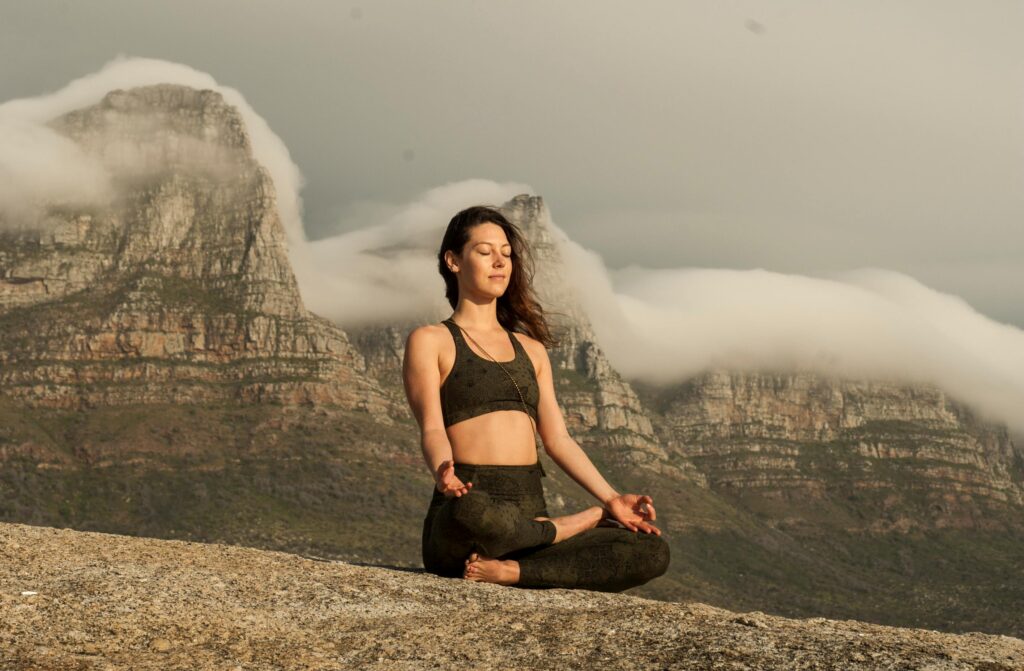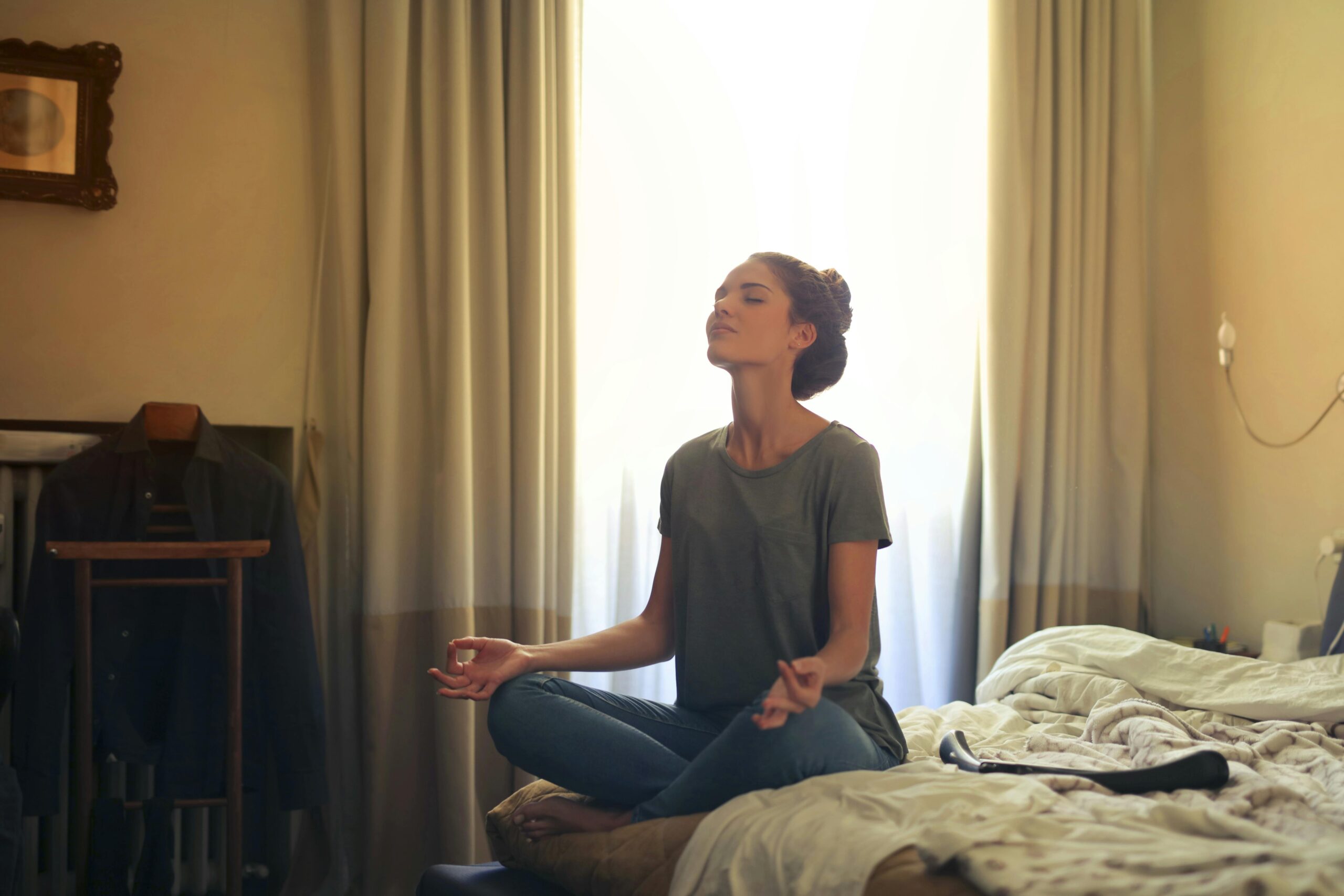How to meditate
Why learn to meditate?
One of the healthy habits I adopted since going to a therapist was learning how to meditate. With grounding, this is a tool you can use to help find calm from anxiety, panic, spiraling thoughts, and stress.

Different ways to meditate
There are many different ways to meditate. You can choose to follow a guide (you can easily find guided meditation videos on YouTube or or through your favorite podcast player) and they will help you through the meditation process step by step. Typically, these videos or podcasts will include some type of gentle music or sounds or vibrations underneath the voice of the guide to help you stay focused. If you do not follow a guide, or do not want to follow a guide, here are some steps you can take to meditate on your own.

1. Find a quiet location in your house, office, or wherever you are.
In order to meditate, it is crucial that you find your own space away from any noise or chaos that might be happening and that will pull your attention away. I like to use my bedroom, where I sit cross-legged on my bed facing the clock so that I can keep an eye on the time. When I still worked in an office full-time, I asked the building manager if there was any extra space for me to use to meditate when on my lunch break or before heading home for the day. Some companies will have quiet rooms that would be perfect for this occasion. Others may have prayer rooms or empty conference rooms that you can use. It’s important, of course, to check with your own manager and company policies to see what types of spaces can be used and for what purposes.

2. Close your eyes, and keep them closed.
You are going to want to free yourself from any additional distraction, which includes visual distractions. Try to avoid meditating when you know you might be disturbed from pets, deliveries, beeping appliances, etc. If it helps, you can also wear a sleeping mask over your eyes to remove any additional light distraction that could be coming through with your eyes closed. Do not attempt to meditate when you need to be focused and alert (for example, do not meditate while driving).

3. Focus on your breathing.
Generally, you will be breathing through your nose while you are meditating. Some meditation guides may have you breathe in a certain pattern to help slow down your heart rate. Square breathing is a very popular method (in through the nose for four counts, hold for four counts, out through the nose for four counts, then in again. This repeats.)

4. Create your mantra.
Your mantra will be used as a string of words, or a made-up word, that you will be focusing on throughout your meditation. This will help you keep your thoughts focused and will help prevent additional thoughts from creeping in. (Note: while the goal is to prevent letting your brain hop around from topic to topic while you are meditating, it is almost impossible to stop intrusive thoughts from coming in during this process. When these thoughts do come in, you can acknowledge them, and calmly dismiss them away as you return back to your mantra). Need some ideas on how to create a mantra? Check out this article from MeditationFocused.com to help inspire you.

5. Slowly, and calmly, repeat your mantra while focusing on your own breath for 20 minutes.
20 minutes is what was suggested to me when I started meditating and seems to be the most effective for me. You may have less time than this- and that’s okay! Even 10 minutes of meditation in a day that feels chaotic or stressful can truly help you relax and calm any excess anxiety you are feeling. When you feel that you are approaching the end of your 20-minute session, slowly open one eye to check the time. If you are not quite there yet, close your eye again and continue until you are at time. Then, slowly open both eyes, close them again for 3 seconds, then open them again and you are finished. If you are religious, you might choose to end your meditation with a little prayer. This is what I choose to do, but of course it is not required in your meditation practice.
Things to remember:
- Try not to meditate when you are too tired. Doing so may simply cause you to fall asleep.
- Your chosen mantra may change from day to day. Or, you may use the same mantra every time you meditate. It’s completely up to you and what helps you the most.
- Intrusive thoughts can and will happen while you are meditating. Be gentle with yourself and do not get upset or angry when this happens. Acknowledge the thought, then let it go, as quickly as it came in. Get back to your mantra.
- You may start to feel the benefits from meditating the longer you practice. You might not feel much of a difference on the first day, but after a week or so, you should start to feel a lot calmer and more at peace.
Once you’ve given meditation a try, let me know how it worked for you! How did you feel beforehand and after? Did you use any guides or not? Maybe you have been meditating already for a long time and none of this is news to you. What are some techniques you use that I have not shared above? Let me know in the comments below. Happy meditating, one and all.







